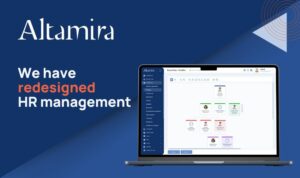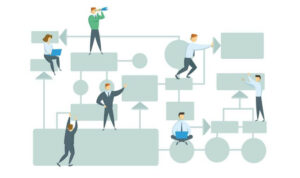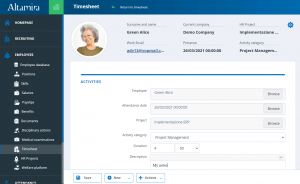Many companies — from multinationals to SMEs — make use of a performance management system, which has historically taken the form of employee evaluation forms.
With a quick online search, you can find a large number of samples of employee assessment forms ready to use. However, it is not a good idea to limit yourself to just downloading one of these for your company.
In order for such a document to be effective, its structure must be the result of a previous work of analysis that needs to answer some fundamental questions, including:
- What does ‘good performance’ mean for your specific company?
- What exactly do you want to evaluate?
- What is the context of reference, and what is the corporate culture like?
- What are the skills required to work for your company?
- What are the skills required to fill each particular position?
- Who is responsible for the evaluations?
Only starting from these (and other) topics of reflection will it be possible to develop a system of employee performance assessment which will allow you to hire, manage, train, develop, promote and retain the very best human resources.
This preliminary phase must be carried out by the HR department, which will also have the task of instructing the evaluators.
This analysis will lead to the creation of an evaluation form that will be tightly correlated with the structure of your particular company. It doesn’t matter whether the graphical layout of the form is created from scratch or by modifying an example of an employee performance assessment form found online.
Structure of a personnel evaluation form
An employee evaluation form that allows the assessment of skills, goals and performance will typically have the following structure:
1. Information on the subject being evaluated, which may include:
- general personal information;
- qualifications;
- company;
- sector;
- responsibilities/role;
- information about the evaluator;
- evaluation period;
2. The goals previously set and a system for evaluating to what extent these were achieved.
3. The list of relevant skills—both technical and personal—with a score to associate with each.
4. The system for calculating the total score and a section in which to report it.
5. An area for comments and feedback, where both participants in the evaluation process can add their thoughts, suggestions, hypotheses to be pursued further, etc.
The advantages of employee evaluation forms
There are several reasons why evaluation forms have been so successful:
- Typically made with a simple text editor or spreadsheet software, they are easy to create and customize according to the performance management process set up for the company.
- They offer ample space for qualitative opinions and comments.
- They do not involve significant production costs.
- They can be easily communicated between the parties to the evaluation process.
The limits of employee evaluation forms
Equally obvious, however, are the limitations of this tool, which have become particularly evident in recent years. These include:
- A lot of data entry is required. This implies a significant volume of work and the risk of committing errors.
- The final scores are calculated by hand, or by setting complicated formulas in spreadsheets.
- The same employee assessment form cannot be accessed and worked on simultaneously by the evaluator and the person being evaluated.
- Low interactivity and engagement for the evaluation process.
- Without a system of deadlines and notifications, the proportion of evaluation forms started and unfinished is high, and evaluations are not always completed at the appropriate time.
- The individual performance assessment forms do not offer an overall vision of the company, which can be achieved only after the laborious work of exporting the data into a common document.
Go beyond the evaluation form
The technological revolution in HR—tied especially with the emergence of SaaS software—is also modernizing the administrative procedures for the performance assessment of employees.
This does not mean that the process that has developed over decades—and which we have only briefly outlined in the first part of the article—should be replaced altogether.
Indeed, the best performance management programs are, in our opinion, those which are able to preserve the strengths of this system, fill in its gaps and broaden its horizons. We can get a more modern and powerful car, but that is no reason to reinvent the wheel!
The preliminary analysis of the processes and the human capital of your company remains essential, as well as the ability to customize the evaluation mechanism to fit the company’s specific needs and characteristics.
What is undergoing change is the structure of the evaluation sheet, which is not eliminated, but rather digitalized and enhanced. The physical support, in particular, is changing: no more paper or text documents, but a workflow in which both parties to the evaluation can be said to be the protagonists.
Thanks to employee performance review software, there are no more individual, separate items—an endless stream of independent documents—but instead a platform on which each individual evaluation process is being brought to completion in an interactive manner by the parties involved, and through which every piece of data can be used by HR and management to perform in-depth analyses of the company’s human capital.
This type of solution, based on a self-service employee database, eliminates the problem of data entry and ensures a higher participation rate.
The most important advantages, however, are found at the final stage, when it is time to reap the benefits from the whole process. All the data collected on the platform can be cross-referenced at will to yield valuable reports on the status of your human capital.
While a particular performance review form can be used to make a decision on whether an employee gets an individual bonus, having an entire database and report-generating system at your disposal means that you can reach general conclusions, identify skill gaps, set up a training plan, guide recruiting choices and promotions on a meritocratic basis, etc.
To sum up, by modernizing your employee performance evaluation system you will get a real strategic tool for your business.
Copyright: ©stockphoto/graf/Fotolia




























































































